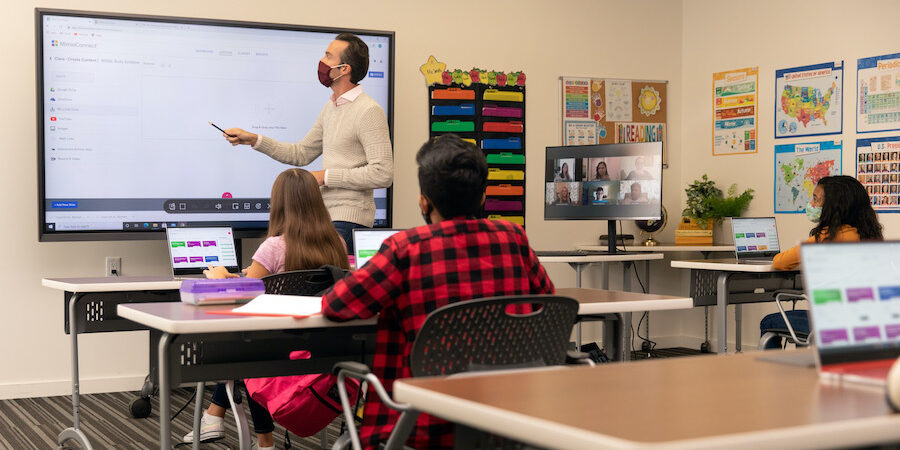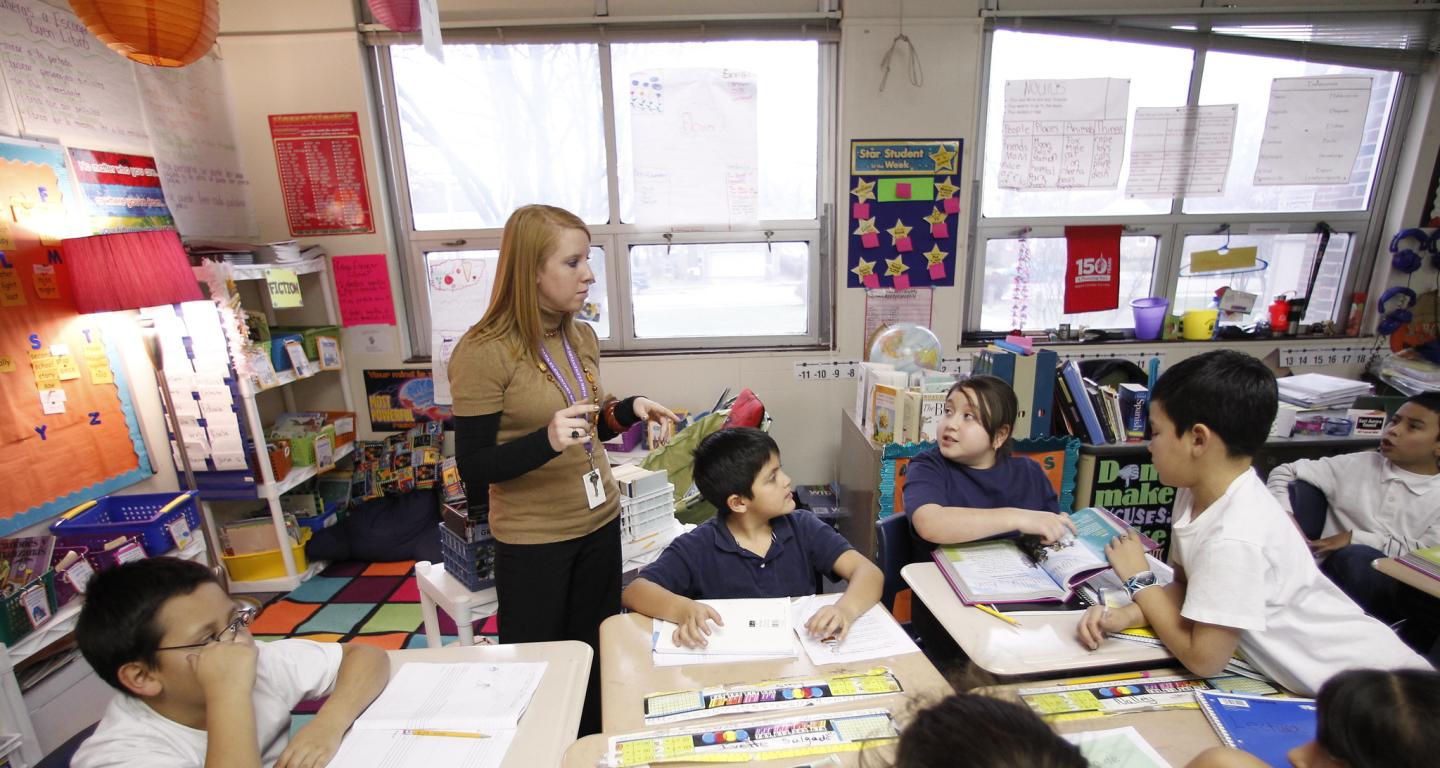Enroll in Primary Science Tuition Singapore for a Strong Science Foundation
Enroll in Primary Science Tuition Singapore for a Strong Science Foundation
Blog Article
Checking Out the Different Teaching Approaches in Main Scientific Research Education And Learning Today
The landscape of main science education is advancing, with various teaching methods getting prestige in contemporary classrooms. Inquiry-based knowing, hands-on experiments, and the combination of innovation are redefining exactly how educators involve young minds. In addition, joint approaches and differentiated direction are being used to satisfy the diverse requirements of students, boosting both engagement and understanding. As we take a look at these methods, inquiries emerge about their efficiency and the effects for future educational practices. What might these changes in approach mean for the following generation of learners?
Inquiry-Based Understanding
Inquiry-Based Discovering (IBL) is a pedagogical strategy that motivates pupils to check out clinical ideas with questioning, examination, and hands-on testing. This technique highlights the role of pupils as active individuals in their knowing, advertising vital thinking and analytic abilities. By engaging with real-world concerns, trainees come to be curious and determined, which improves their understanding of clinical concepts.
In IBL, teachers work as facilitators, directing trainees as they navigate their queries as opposed to supplying details directly. This student-centered technique enables differentiation, fitting various learning rates and styles. Students establish skills in formulating hypotheses, developing experiments, and evaluating information, which are important for scientific proficiency.
Additionally, IBL fosters collaboration among students, encouraging them to share ideas and findings. This cumulative query promotes social abilities and a feeling of community within the classroom. Furthermore, the procedure of questions urges durability, as trainees learn to embrace failure as a tipping stone towards understanding.
Hands-On Experiments
Hands-on experiments are a vital component of reliable scientific research education, enhancing the principles of inquiry-based understanding. These experiments enable students to engage straight with clinical ideas, promoting a much deeper understanding with experiential understanding. By manipulating materials and observing outcomes, young students can realize abstract theories in substantial ways.
Such activities advertise vital thinking and problem-solving abilities, as pupils assume end results, conduct experiments, and examine outcomes. This procedure encourages them to ask concerns, improve their understanding, and develop a scientific attitude. Hands-on experiments can be tailored to diverse knowing styles, making sure that all pupils have the opportunity to engage meaningfully with the material.
Additionally, hands-on experiments usually motivate collaboration amongst peers, promoting teamwork and communication abilities. Operating in teams makes it possible for students to share concepts, discuss findings, and gain from each other, which improves their overall instructional experience.
Including hands-on experiments right into the primary scientific research educational program not only enhances the discovering environment yet also grows a long-lasting passion in scientific research. By proactively taking part in their education and learning, students are much more likely to establish an enthusiasm for clinical query that expands beyond the class.

Technology Combination
Incorporating innovation right into primary scientific research education has actually ended up being increasingly essential in cultivating student involvement and improving learning outcomes. Using electronic tools, such as interactive simulations, digital laboratories, and academic software application, provides pupils with opportunities to explore scientific concepts in cutting-edge ways. These resources facilitate a much deeper understanding of intricate subjects by permitting students to imagine and manipulate variables that would certainly be unwise in a conventional class setting.
In addition, innovation combination motivates individualized learning experiences. Students can proceed at their very own rate, taking another look at challenging ideas with multimedia resources, which accommodate various discovering styles. This flexibility not only supports individual development yet also grows a sense of autonomy in students.
Furthermore, technology works as a bridge to real-world scientific research, connecting students with current research study and professional contributions. Access to online databases and clinical journals expands students' perspectives on clinical inquiry and fosters essential thinking abilities.
Collaborative Understanding
Collaborative understanding plays an important function in primary scientific research education and learning by cultivating synergy and interaction abilities amongst students. This approach urges learners to work with each other, share knowledge, and take part in analytical, review which improves their understanding of scientific concepts. By taking part in group tasks, pupils discover to express their ideas, listen to varied point of views, and discuss solutions, all of which are necessary skills in both scholastic and real-world contexts.

Study suggests that joint knowing can cause boosted inspiration and interaction in science subjects, as students locate pleasure in shared experiences (primary science tuition Singapore). In addition, this technique prepares trainees for future joint endeavors, equipping them with the abilities necessary for reliable team effort in college and expert environments. Ultimately, accepting collaborative understanding in key scientific research education can dramatically enhance the understanding experience and promote a deeper understanding of scientific questions
Differentiated Direction

Differentiated direction can manifest in various means, such as differing the material, processes, or items of discovering. For instance, instructors may utilize tiered jobs that provide varying levels of intricacy, enabling students to work at their corresponding readiness levels. Additionally, flexible organizing techniques can assist in partnership amongst pupils with various capabilities, fostering peer knowing.
Evaluation plays a vital duty in this technique, as it notifies guideline and helps instructors comprehend each pupil's special demands. Developmental evaluations, such as monitorings and tests, can direct educators in changing their techniques to improve finding out results. primary science tuition Singapore. Eventually, by carrying out set apart direction in key scientific research education, teachers can grow a much more effective and equitable knowing setting, encouraging all pupils to reach their complete possibility in comprehending scientific sensations
Final Thought
In recap, the diverse mentor over at this website methods in primary science education, including inquiry-based knowing, hands-on experiments, modern technology combination, joint learning, and differentiated direction, jointly contribute to a much more effective discovering atmosphere. These methods advertise critical thinking, analytical abilities, and a much deeper understanding of clinical concepts. By applying these methods, educators can produce supportive and engaging class that address the varied demands of pupils, inevitably cultivating a long-lasting rate of interest in scientific research and improving scholastic success.
Inquiry-Based Knowing (IBL) is a pedagogical strategy that encourages trainees to discover scientific principles via doubting, investigation, and hands-on experimentation.Collaborative knowing plays a crucial function in key scientific research education by promoting synergy and communication skills among students.Study shows that collective knowing can lead to find more information increased motivation and engagement in scientific research topics, as trainees discover satisfaction in common experiences.In fostering an inclusive knowing environment, separated guideline arises as a key strategy to accommodate the varied requirements and capacities of students in main scientific research education and learning. Eventually, by executing distinguished guideline in primary scientific research education and learning, instructors can cultivate a more fair and effective knowing environment, equipping all pupils to reach their full possibility in recognizing clinical sensations.
Report this page